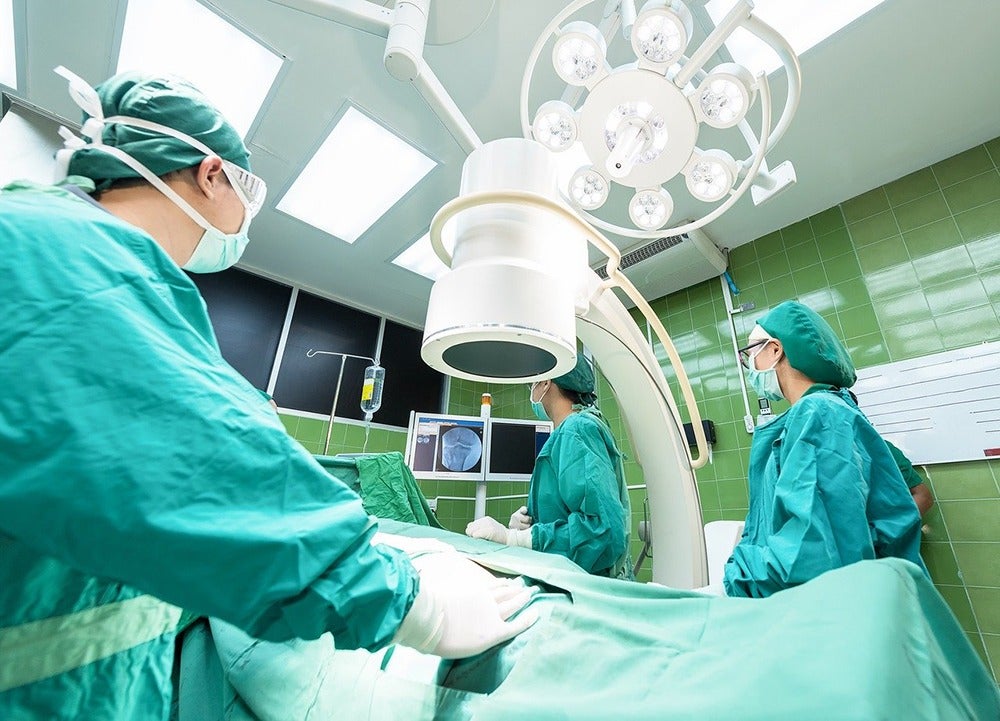
Medical device fraud is a relatively well-kept secret in the healthcare industry. While the pharmaceutical industry has accepted the dangers counterfeiting poses, there are suggestions that device manufacturers are grossly underestimating the problem. Stephanie Webster assesses the scale of the problem.
Counterfeit products are on the rise worldwide with regard to volume, level of sophistication and number of countries affected. In 2010, WHO reported that 8% of all medical devices in circulation are known to be fake, but actual numbers are likely to be significantly higher. This trend is attributed to the lack of effective regulation and weak enforcement capacity in these countries, as well as the increasingly innovative strategies employed by counterfeiters.
There is a huge diversity of counterfeit products but they are often referred to as a homogeneous group. Researchers have classified them into five main categories: disaggregators, imitators, fraudsters, desperados and smugglers. These vary in terms of the visual and functional quality, and complexity.
The disaggregator group includes products of a high complexity, whereas the imitators are those with the highest visual and functional quality and product complexity. The latter therefore closely resemble genuine products.
The smuggler group, which includes products with average to high visual and functional quality and medium complexity, shares some similarities with the imitator group. The major difference is the circumvention of taxes by smuggler group.
The fraudster group includes products of high visual but low functional quality, which are likely to be taken as genuine due to their medium level of complexity.
Desperados are products where the visual quality is medium to high, but the functional quality and product complexity is low. These pose a severe threat to consumers and, therefore, these are in direct conflict with enforcement agencies, such as the FDA.
Limitations of data in tackling counterfeit medical devices
In the scientific literature, there is little data about the quality of medical devices in resource-limited settings. This can be ascribed to the relatively poor regulatory oversight, a lack of knowledge about low-quality products among scientists and decision-makers, and poor quality assurance in diagnostic laboratories.
There are also issues around the consistency of definitions used in different countries. The key tension lies between devices that have been deliberately mislabelled and those that are substandard. However, this is not always a simple distinction to make, because there are several reasons that products might perform poorly other than the product being counterfeit, such as climatic conditions.
The problem of poor-quality medical devices in resource-limited settings is challenging to address. It requires operational definitions for substandard and counterfeit products, to enable accurate appraisal of the extent of the issue. Significant investment is needed to reinforce the national regulatory oversights on medical devices in these areas, and facilitation of proactive and transparent exchange of information between northern and southern regulatory authorities.
Industrialised countries can also play a role by expanding and strengthening their regulatory oversight and quality labels to products most frequently used in low-resource settings. A combination of these measures will result in better protection of patients in these countries.
Unsurprisingly, resource-limited areas are also those most likely to be affected by counterfeit medical devices, due to the poorer access to high-quality healthcare.
Taking a holistic approach is key, and understanding how fraudulent devices pervade the system is a central component of an effective risk-reduction strategy. The majority of counterfeit products enter the system through supply chain vulnerabilities. Manufacturers thus need to analyse their supply chain from end to end to identify gaps where perpetrators can compromise their products.
This includes being particularly vigilant during natural disasters and disease outbreaks, which are both associated with increases in fraudulent activity. A sudden boost in demand can easily outstrip supply, creating an opportunity for counterfeits to enter the system. Developing countries are particularly at risk, where the desirability of affordable healthcare outweighs safety concerns.

Applications in more developed nations
It’s important to note that developing countries are not the only target. Existing outside of geographical and political boundaries, the rapid advancement of technology now makes it easier to imitate packaging. Even highly regulated markets have been tainted by counterfeit devices disguised as legitimate brands. Counterfeit devices avoid the rigorous safety tests and are thus far more susceptible to malfunctions. Manufacturers need to be wary of potential liability cases brought against them by professionals who have inadvertently injured patients when using such products.
Tampering with authentic devices is also hugely risky. There are huge amounts of sensitive health information stored that can be accessed and vital information relating to the operation of the device can be altered. Furthermore, replacing components with counterfeit ones can cause a product to malfunction or carry out malicious acts. In light of these risks to patients and manufacturers, it is clear there is an urgent need to implement and continually improve anti-counterfeiting measures. Fortunately, there are a number of options to address the issue, and advanced packaging technologies are particularly advantageous.
One of the best methods to protect against counterfeiting involves the incorporation of dust-sized or microparticles into the packaging, labels or the device itself. These are made of silicon dioxide and can carry digital information that can be used to identify, trace and authenticate products. These particles are integrated covertly so that the packaging is not adversely affected. They can also be incorporated using pre-existing laminates and varnishes.
Another anti-counterfeit strategy is creating a unique identification marker using DNA. This ‘SignatureDNA’ technology is where specific DNA signatures can be incorporated into packaging and the material. This system works as a ‘lock and key’ model whereby the DNA in the package or material can only be unlocked using its complementary DNA pattern. These forensic security features tend to be the most expensive. Their functionality relies on an ability to be practical to apply and quick to verify, and many require laboratory testing to verify authenticity. However, these are impossible to counterfeit.
Using a tamper-evident opening system (TOES) is an additional option. This contains a cover foil in the packaging that is destroyed if the packing is tampered with, and therefore provides protection if the product is opened illegally or misused.
Manufacturing-stage solutions
There are also solutions that can be implemented during the manufacturing stage, such as an embedded unique electronic signature called a circuit signature. These are strategically added at specific places in the electronic circuits of the device during manufacturing. Circuit signatures do not alter the function of the circuits but can provide an additional layer of security because the authentic parts of the device can be easily identified.
COMBATTING COUNTERFEIT DEVICES
Service and maintenance needs to be undertaken by competent personnel and in accordance with the original equipment manufacturer’s instructions, using parts meeting the original manufacturer’s specification. Selling, procuring or installing non-compliant, modified or counterfeit parts and devices has consequences if equipment fails or operates incorrectly, including:
- Compromised diagnostic or therapeutic performance impacting on patient care pathways
- Poor performance and/or reliability problems
- Damage to equipment and infrastructure
- Inconvenience from loss of service
- Possible detrimental or safety effects on other nearby medical devices
- Additional cost, such as loss of service or device replacement upon failure
- Damage to reputation
- Injury or death of patient and users
- Criminal proceedings, fines or imprisonment
Procurement teams should:
- Establish and maintain robust procurement processes to minimise the risk of buying non-compliant and counterfeit parts and devices
- Not be afraid to check out any supplier’s approvals/marks/registrations
- Confirm those repairing and servicing medical equipment are doing so in accordance with the manufacturer’s instructions and using approved parts to prevent invalidating the CE marking of the device.
- Establish an audit process to test your ability to avoid buying these noncompliant or counterfeit parts and devices
- Maintain good, auditable records for traceability
- Work with known devices, trusted brands and reliable supply chain sources
- Be extra cautious when considering buying unknown devices and/or through unfamiliar channels/sources
- Where a maintenance contract is procured that includes the provision of spare parts, be sure to check that the provenance of the spare parts source is of the appropriate standard; never just assume
- Ensure personnel (at ALL levels) are trained to be aware of the risks and consequences.
Source: Healthcare Management
Employing aggressive anti-counterfeiting strategies also helps to ease the mind of the end user. Packaging design can increase confidence in the device with subtle clues about its legitimacy. The logo, lettering and colour can all be created with this in mind. Distinctive designs can also limit a counterfeiter’s ability to replicate. Packaging security features operate as a deterrent and a brand detection tool, but they can also provide strong evidence to authorities that a product is counterfeit and warrants an investigation. They could also be the evidence a brand needs to absolve itself of blame for accidents sustained through malfunctioning of counterfeit devices.
The EU MDR, coming into effect in May 2021, will also help in the fight against counterfeiting. According to the regulation, unique device identification (UDI) will be enforced to help track devices throughout the supply chain and will be added to all labels. The EU MDR will introduce stricter ex-ante control for high-risk devices, expanded the coverage of medical devices to include certain aesthetic devices, and revised its classification systems to introduce an ‘implant card’ that needs to be carried by patients with implanted medical devices. The EU MDR has enhanced post-market surveillance and facilitates greater inter-agency cooperation.
The new regulation will positively impact operations throughout the supply chain. Implementation will increase demand for more information about clinical data, technical documentation and labelling by regulators. This will mean manufacturers will need to be able to provide meticulous clinical evidence for all their products. The EU MDR ensures traceability of devices, as well as raising awareness of the problem of counterfeiting in patients, manufacturers and policymakers, and encouraging them to think creatively about solutions. It is clear that there is no room for complacency in this area, and therefore acknowledging the extent of the issue and the wide-ranging consequences is key. A versatile and comprehensive strategy is integral to battling such a complex and evolving threat. As long as market conditions continue to create a profitable environment, counterfeit products will continue to be created, adversely affecting manufacturers, healthcare professionals and patients.
This article originally appeared in Volume 1, 2020, of Medical Device Developments. The full issue can be viewed here.






